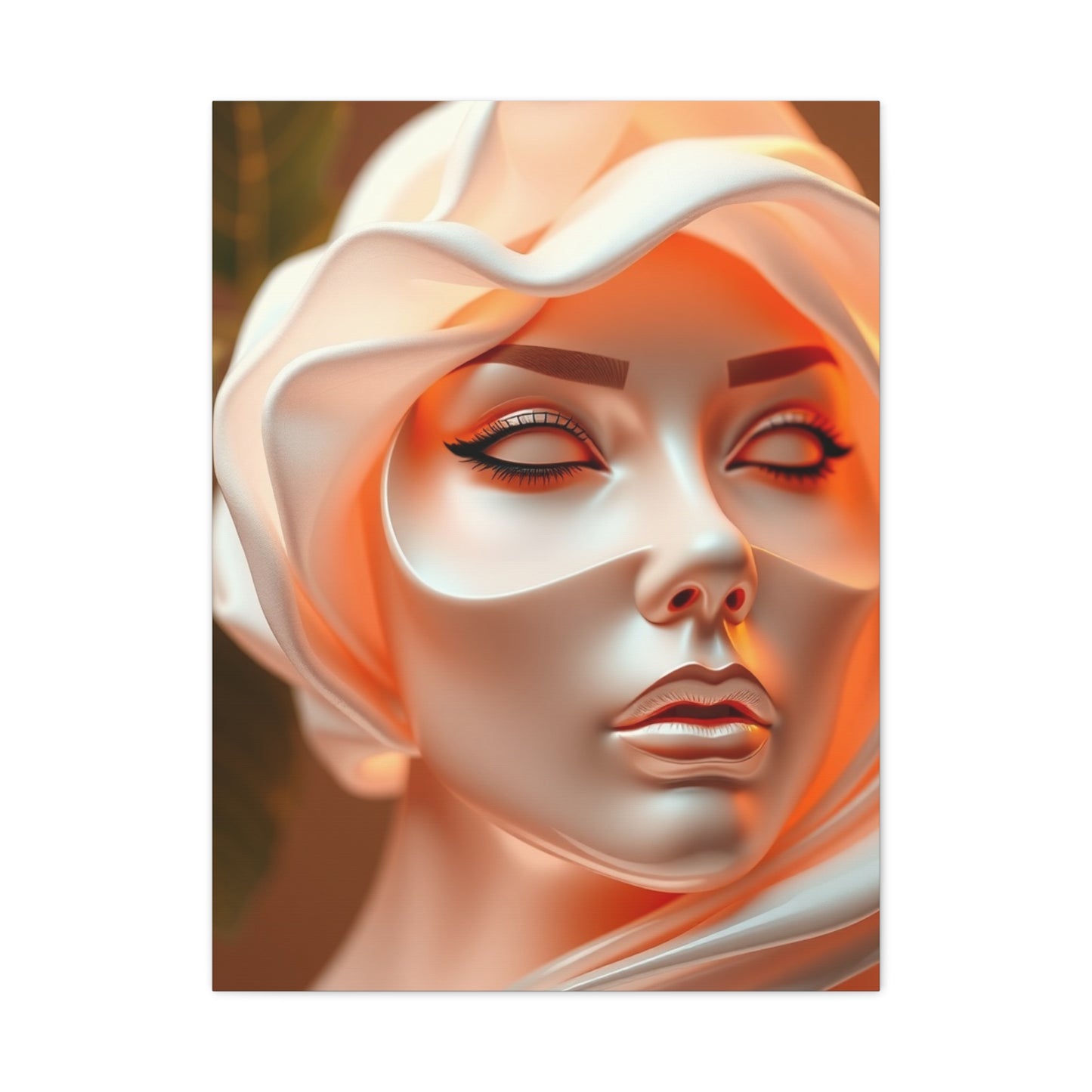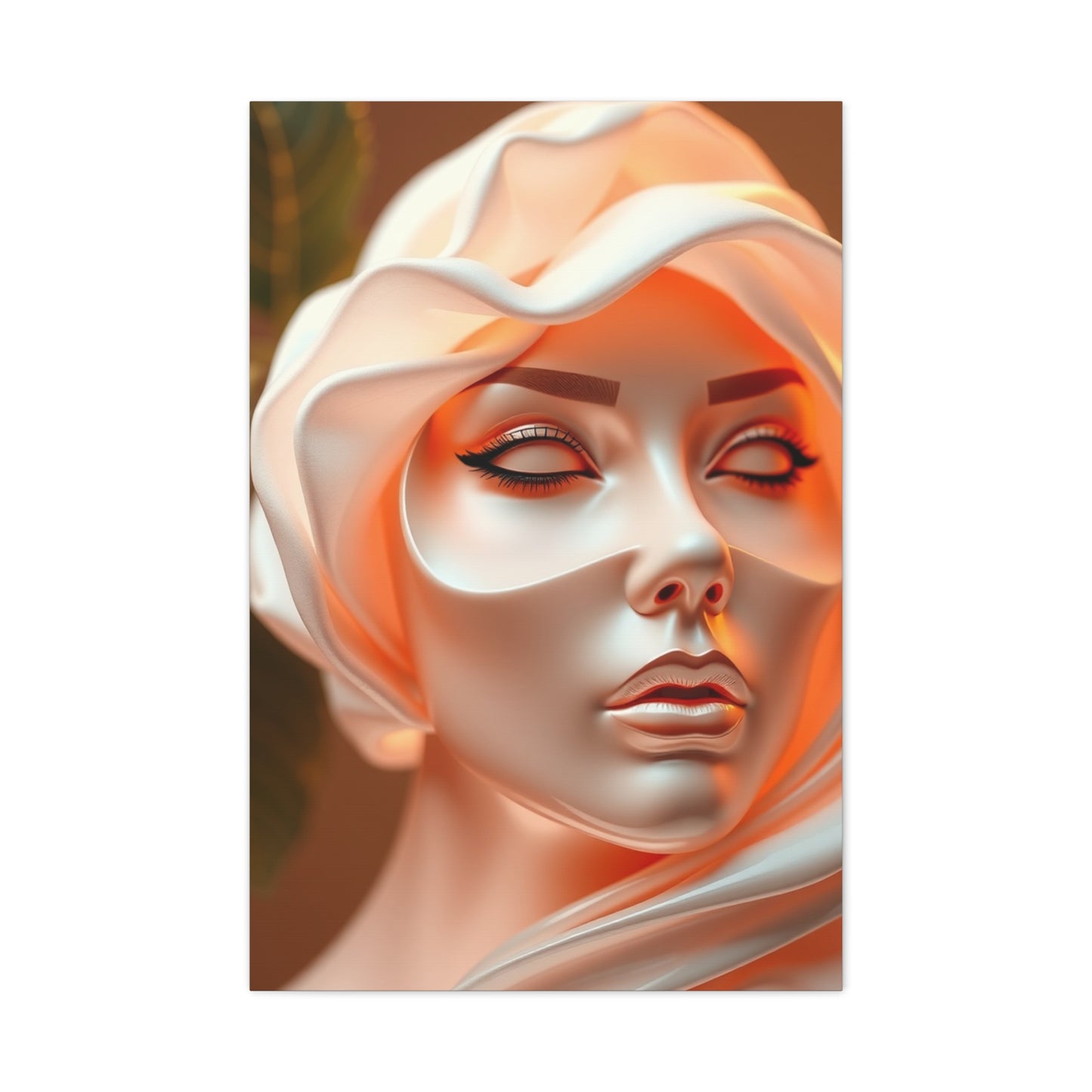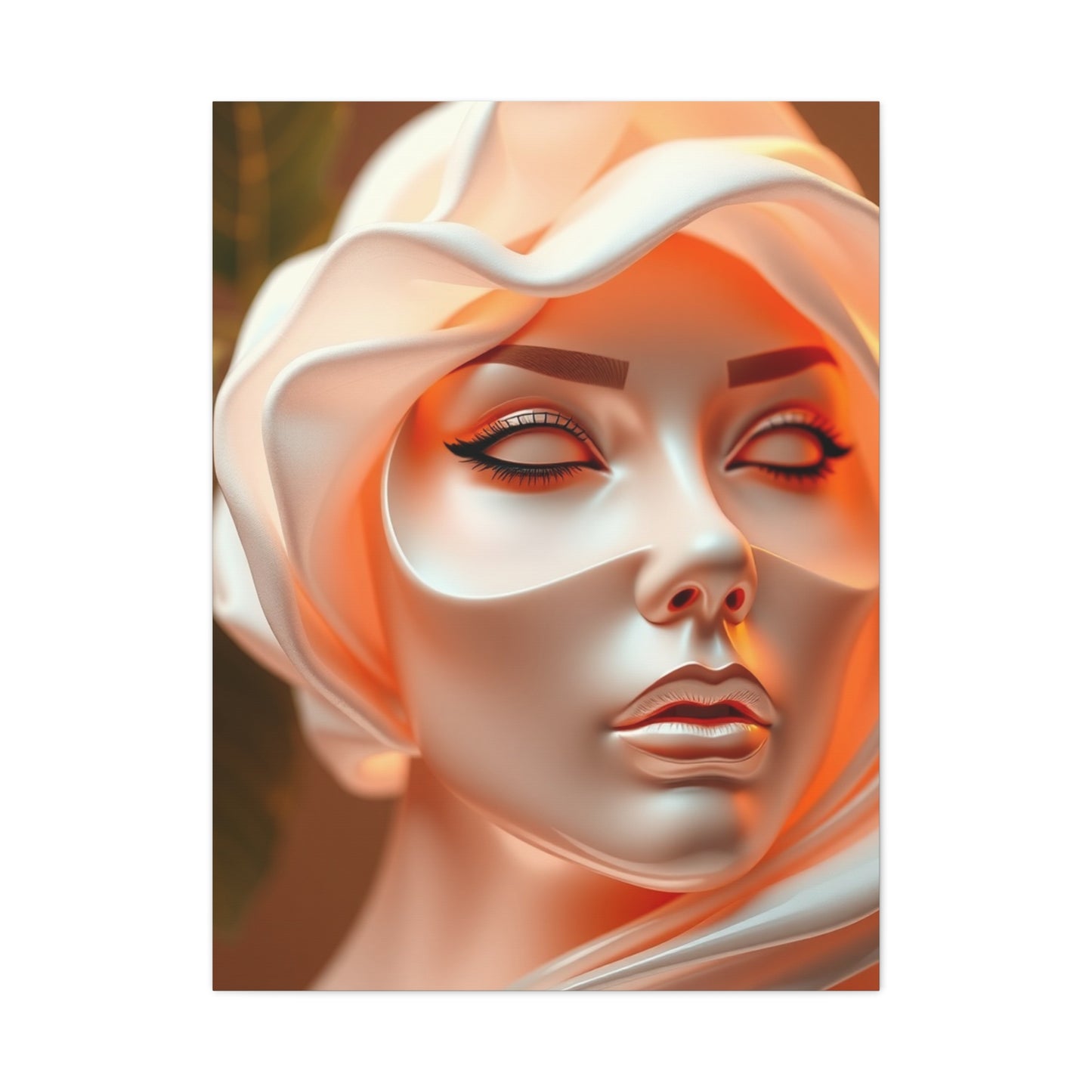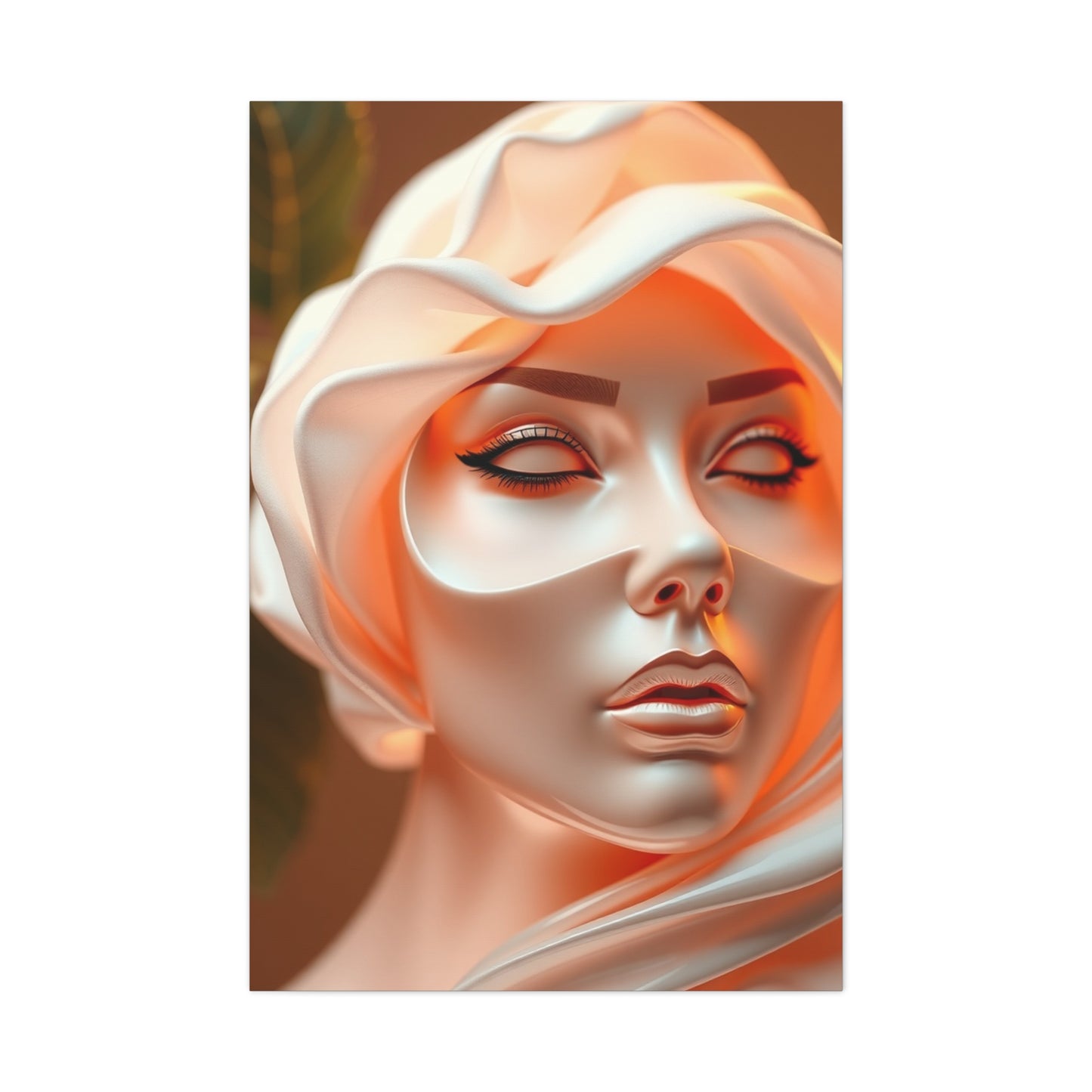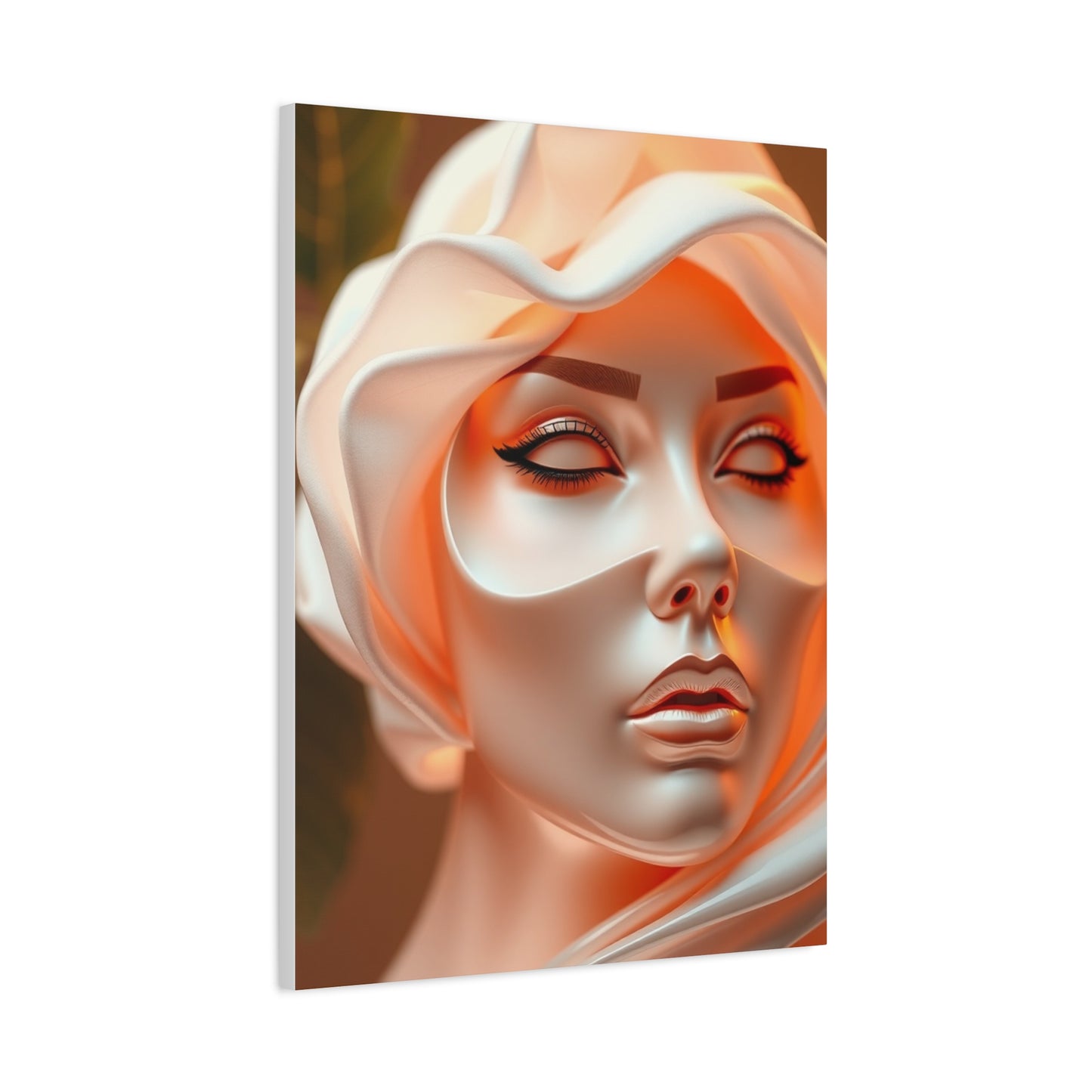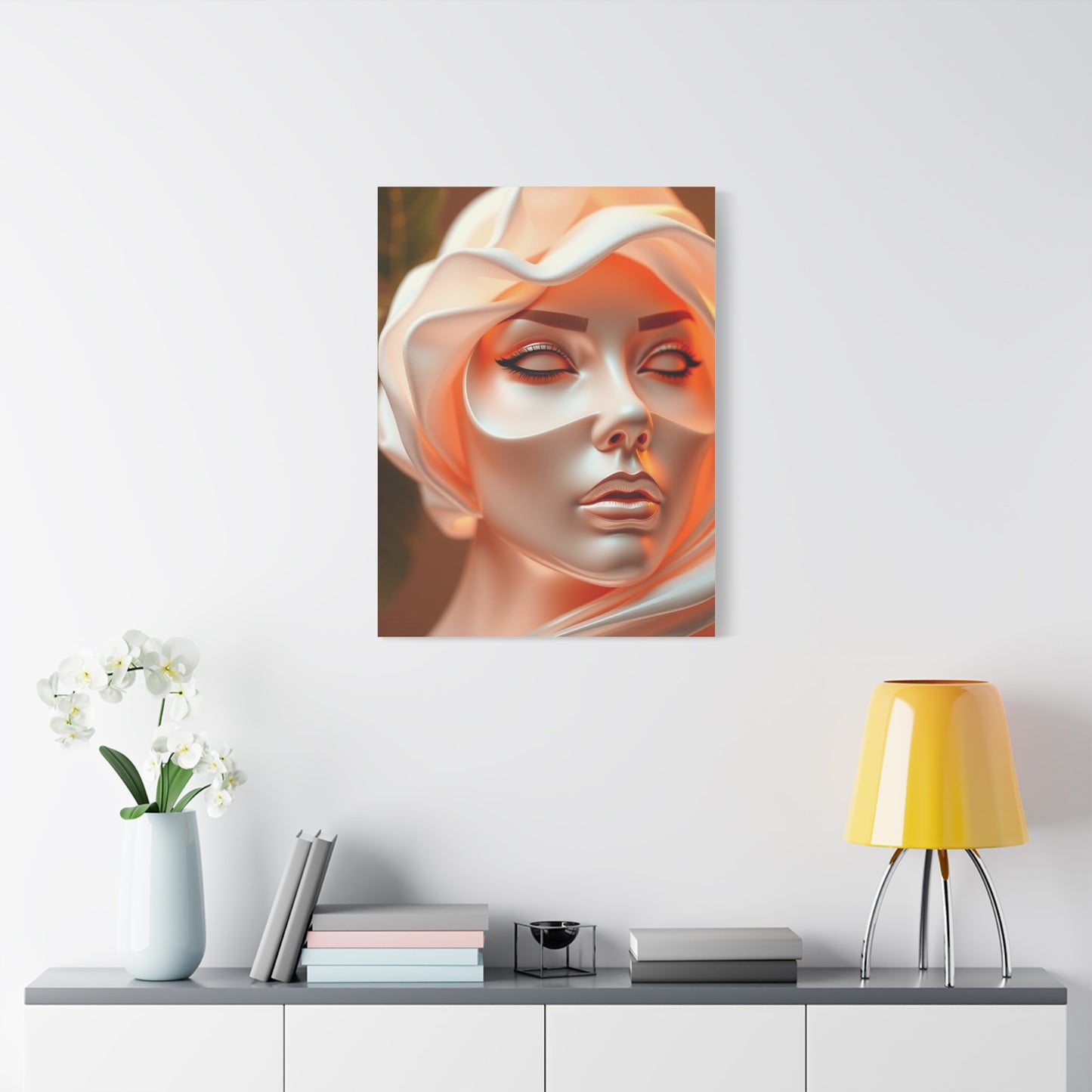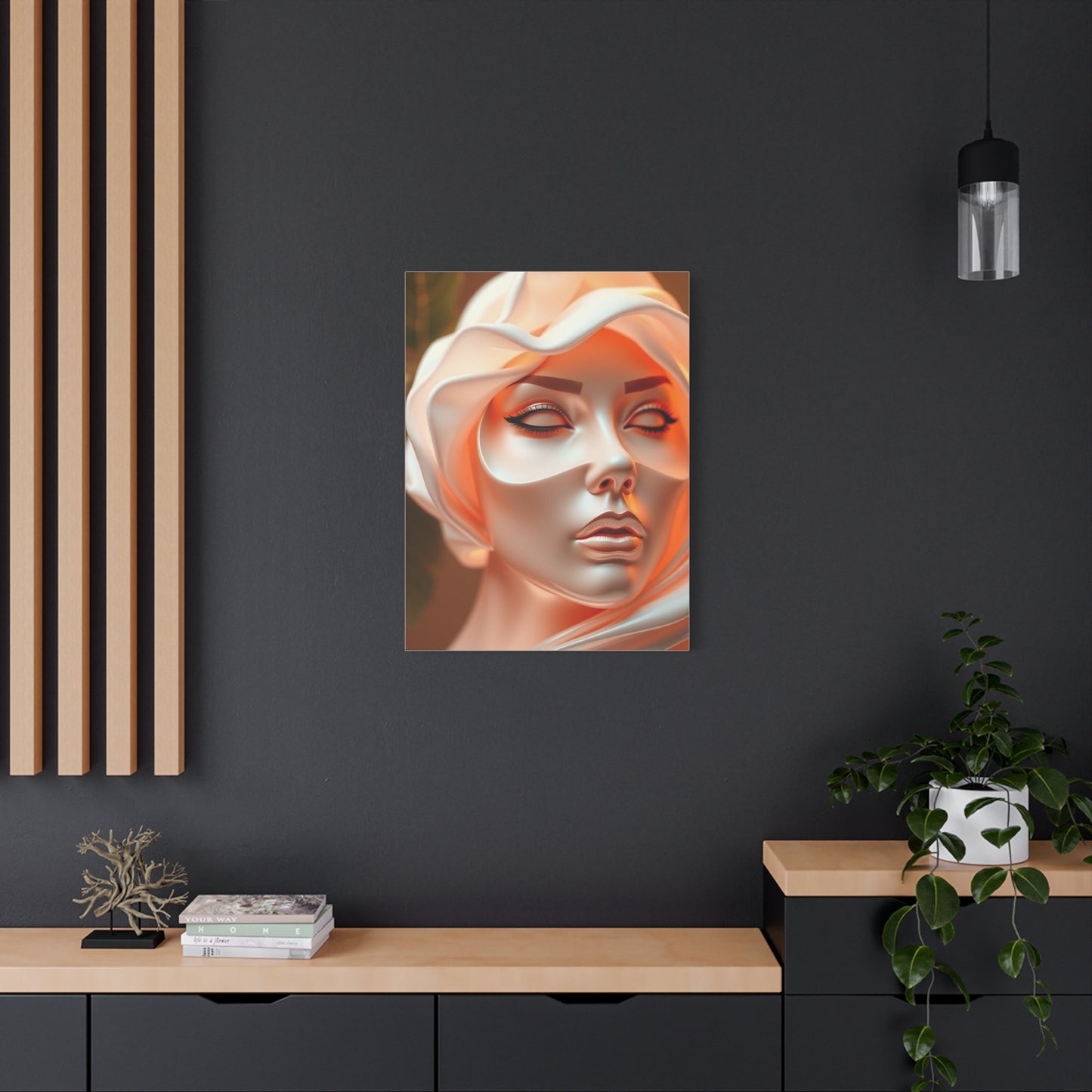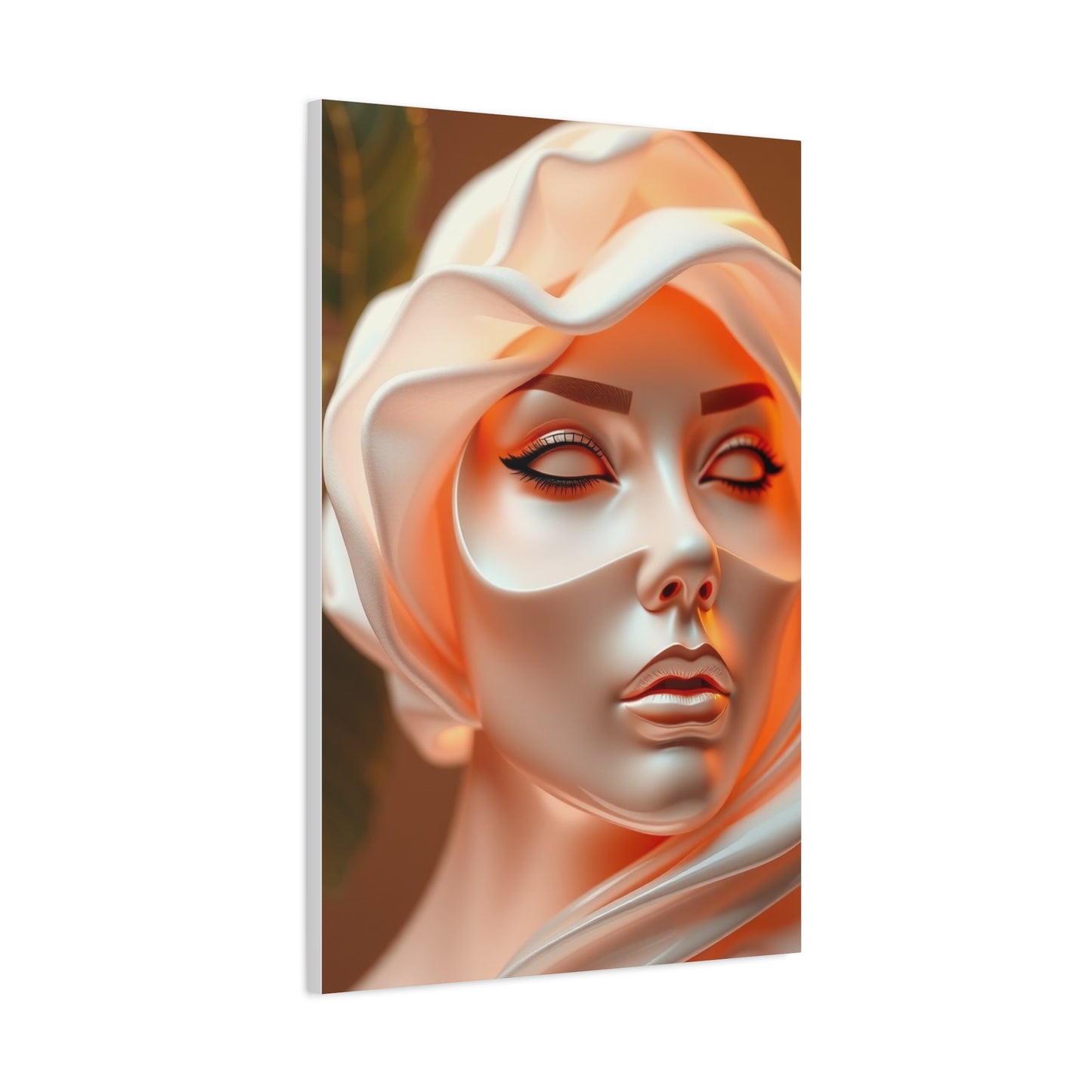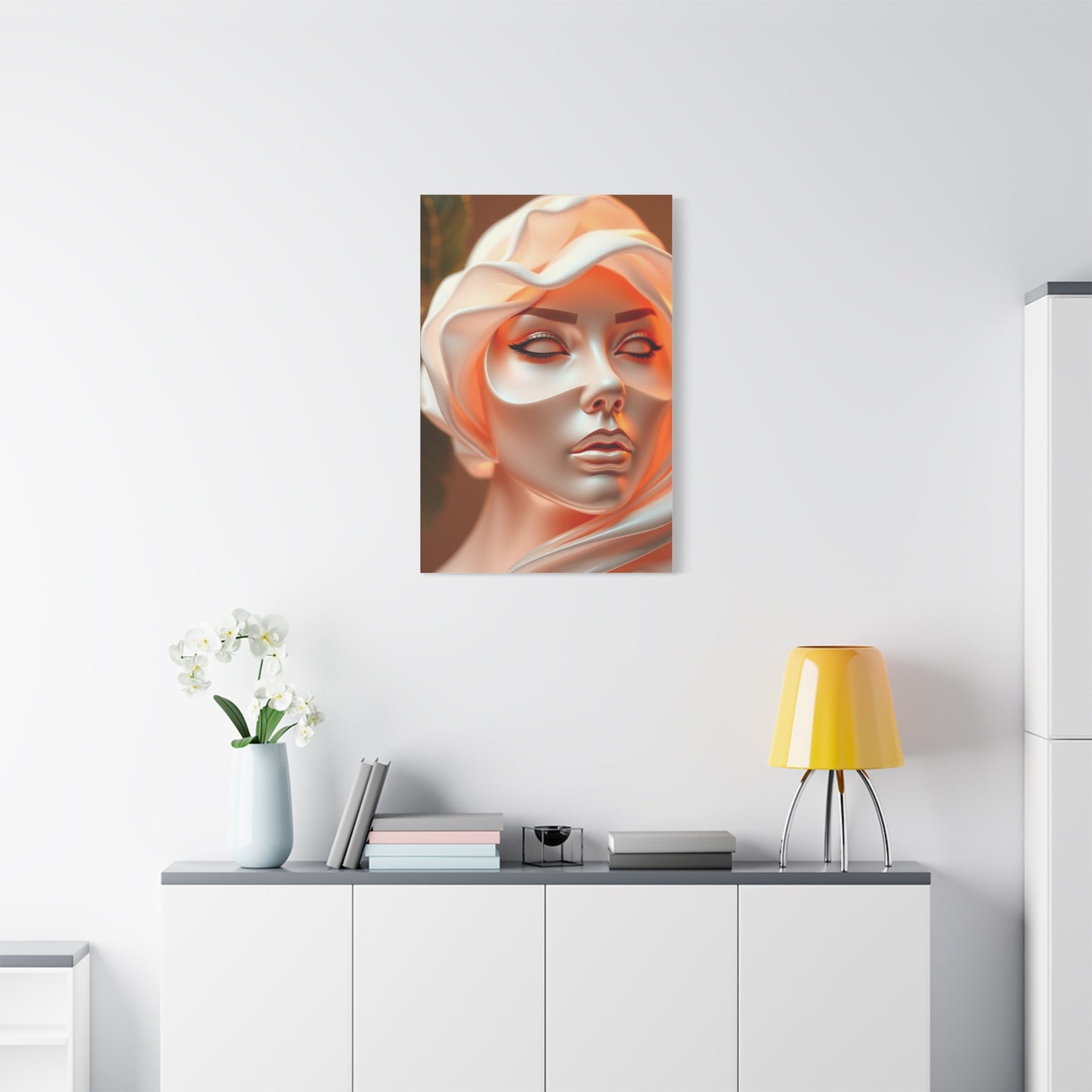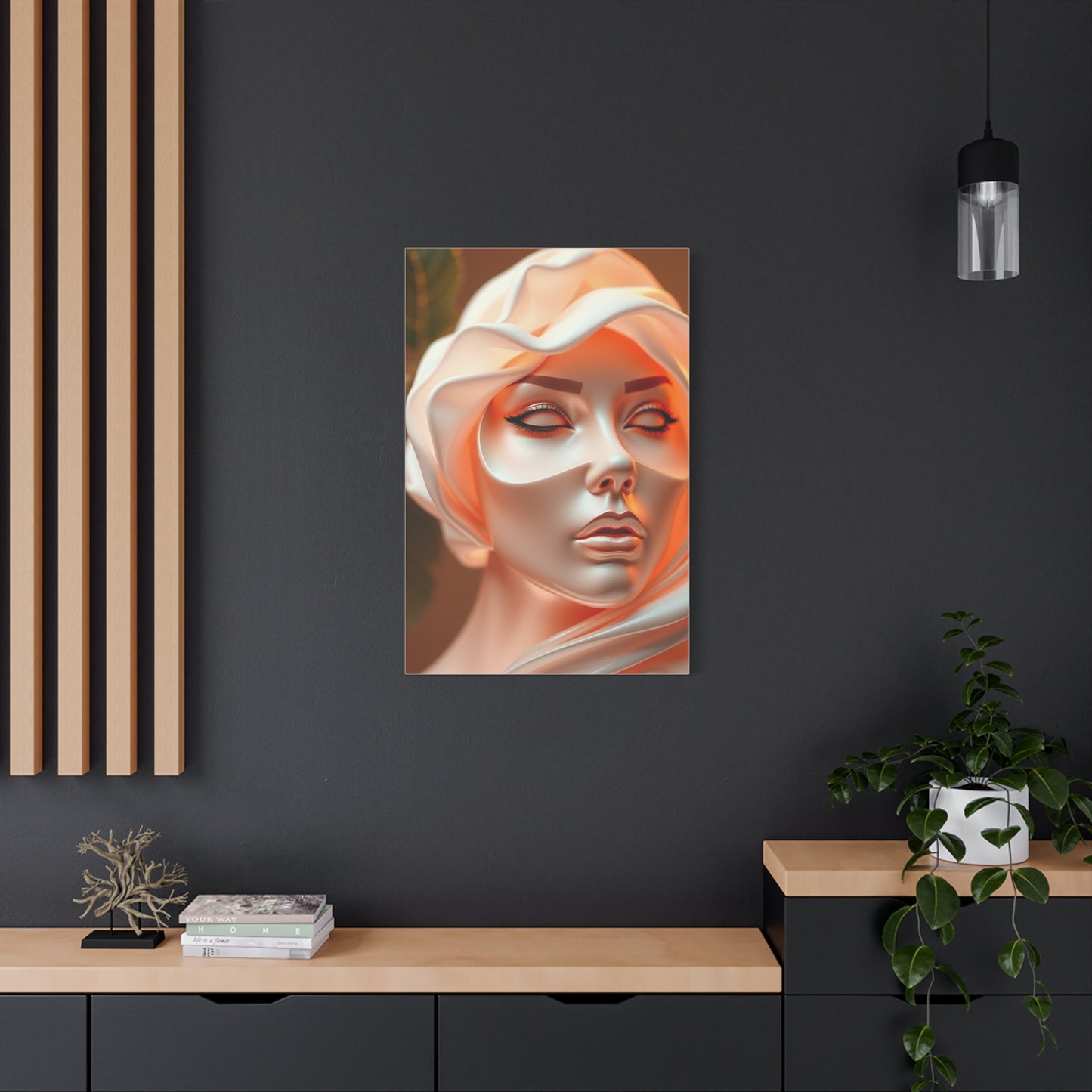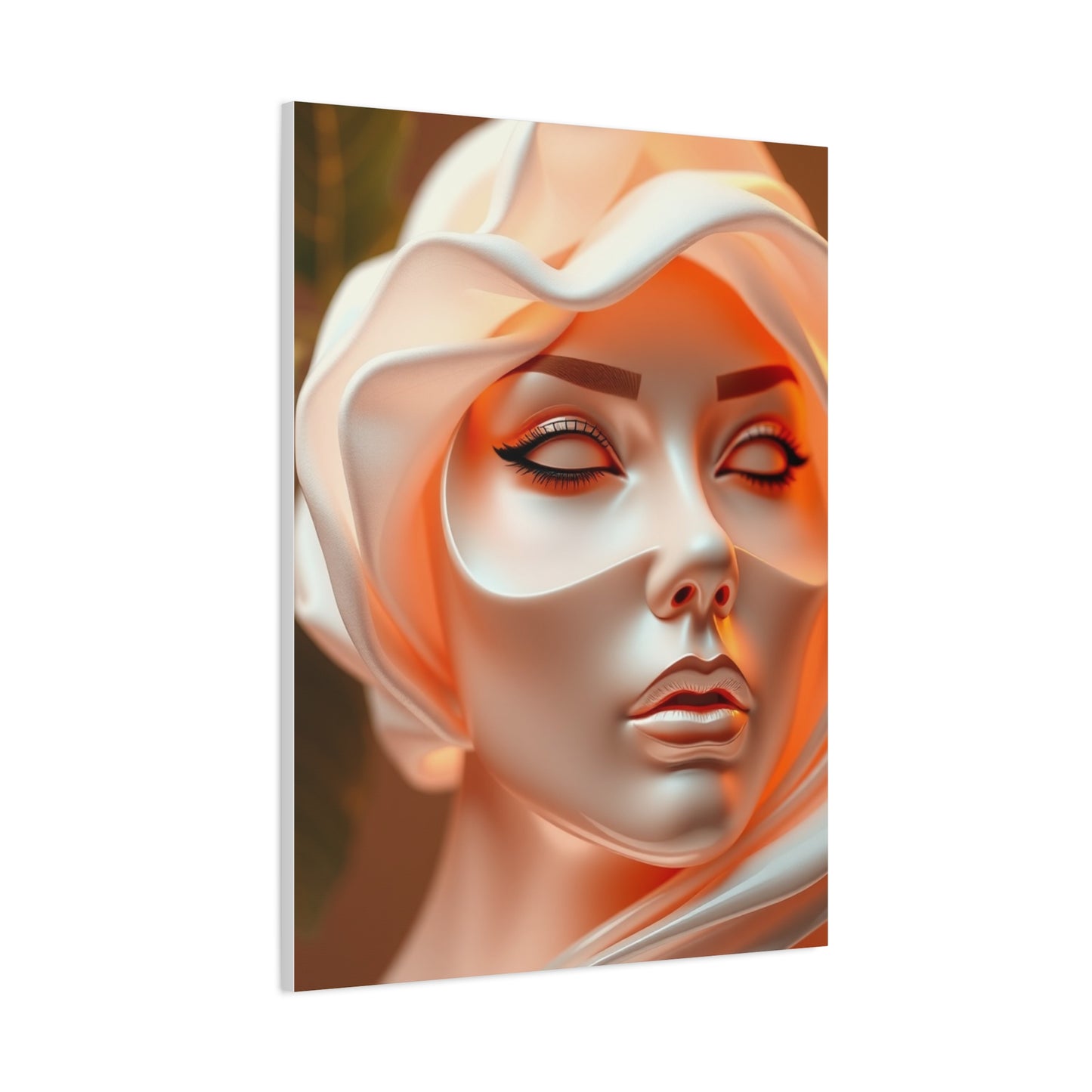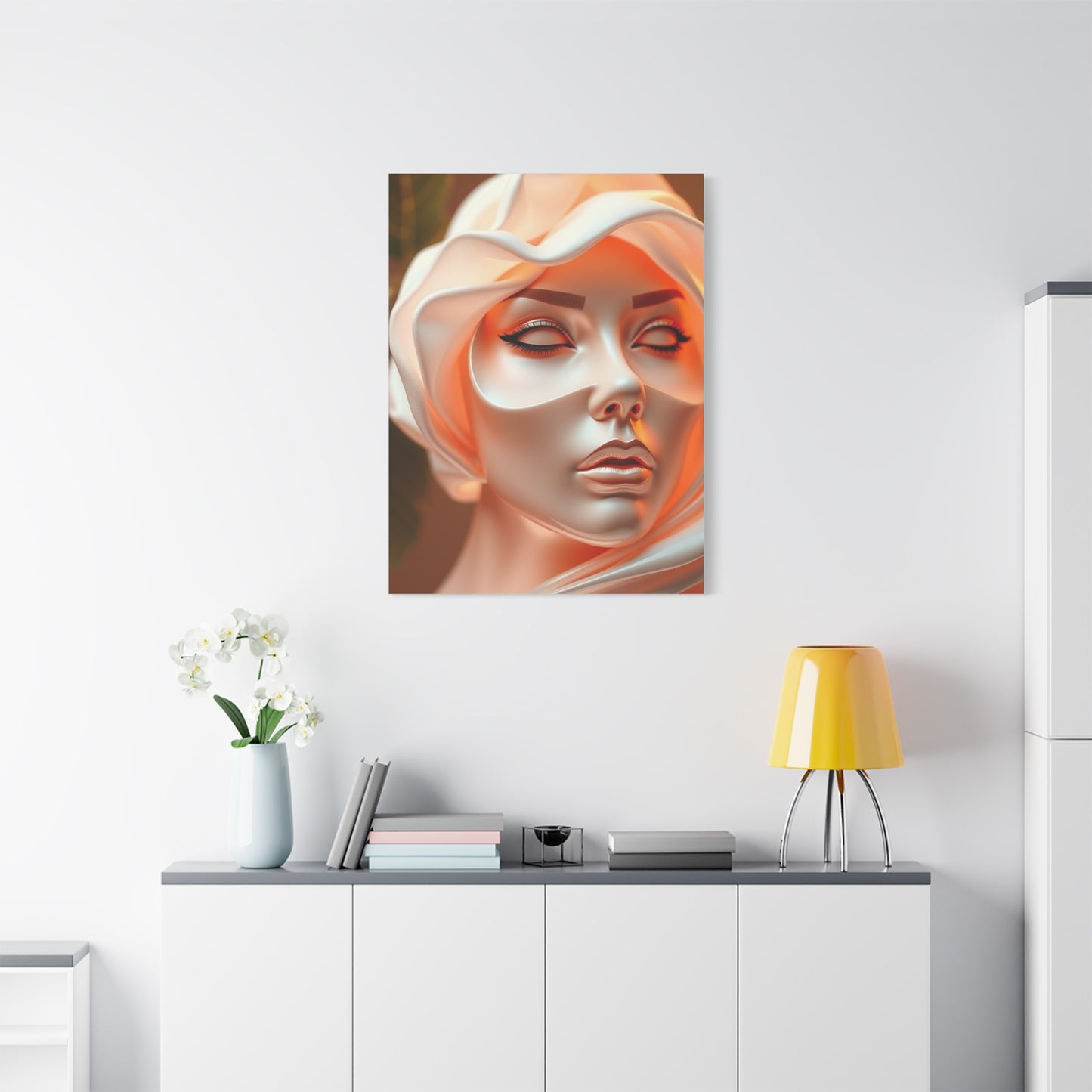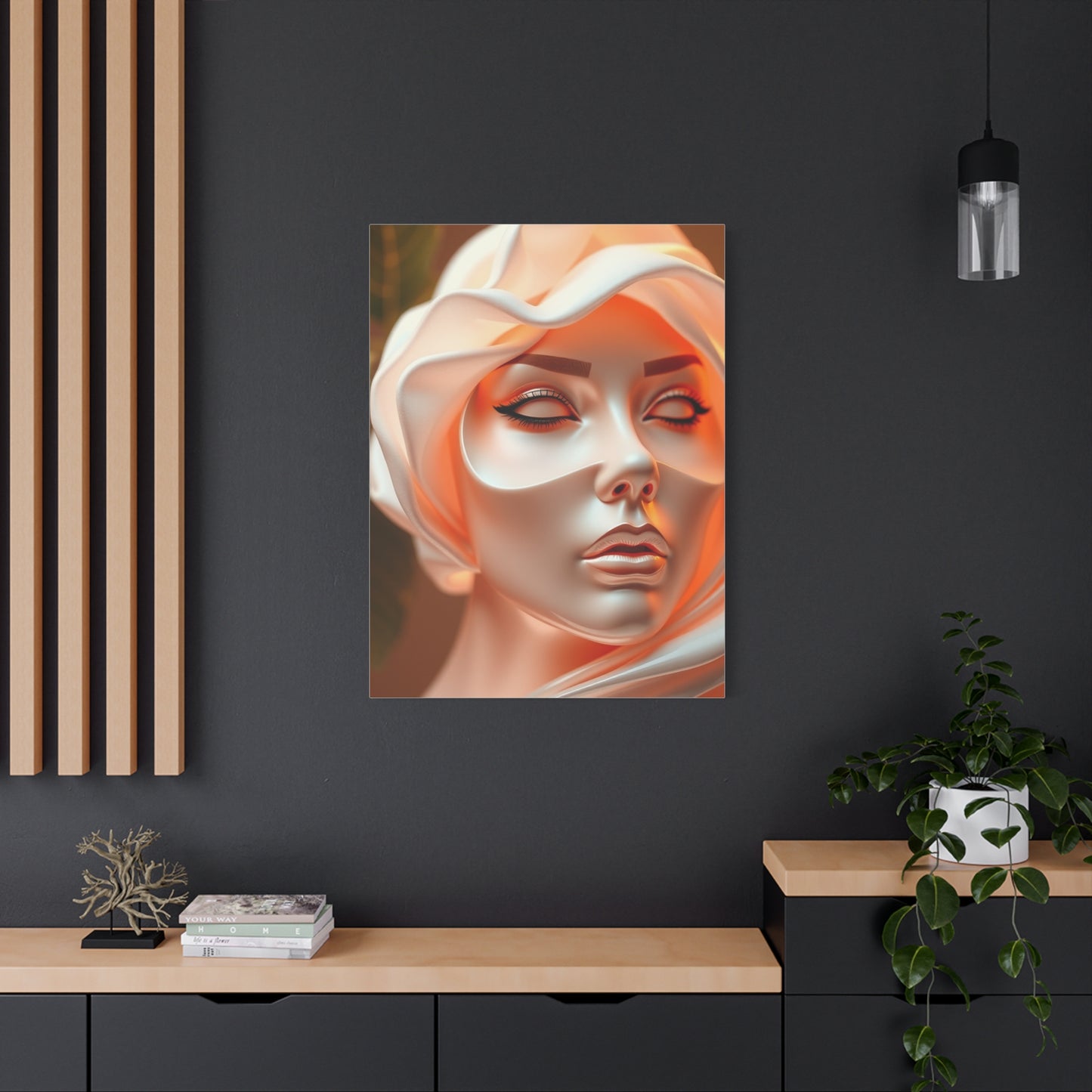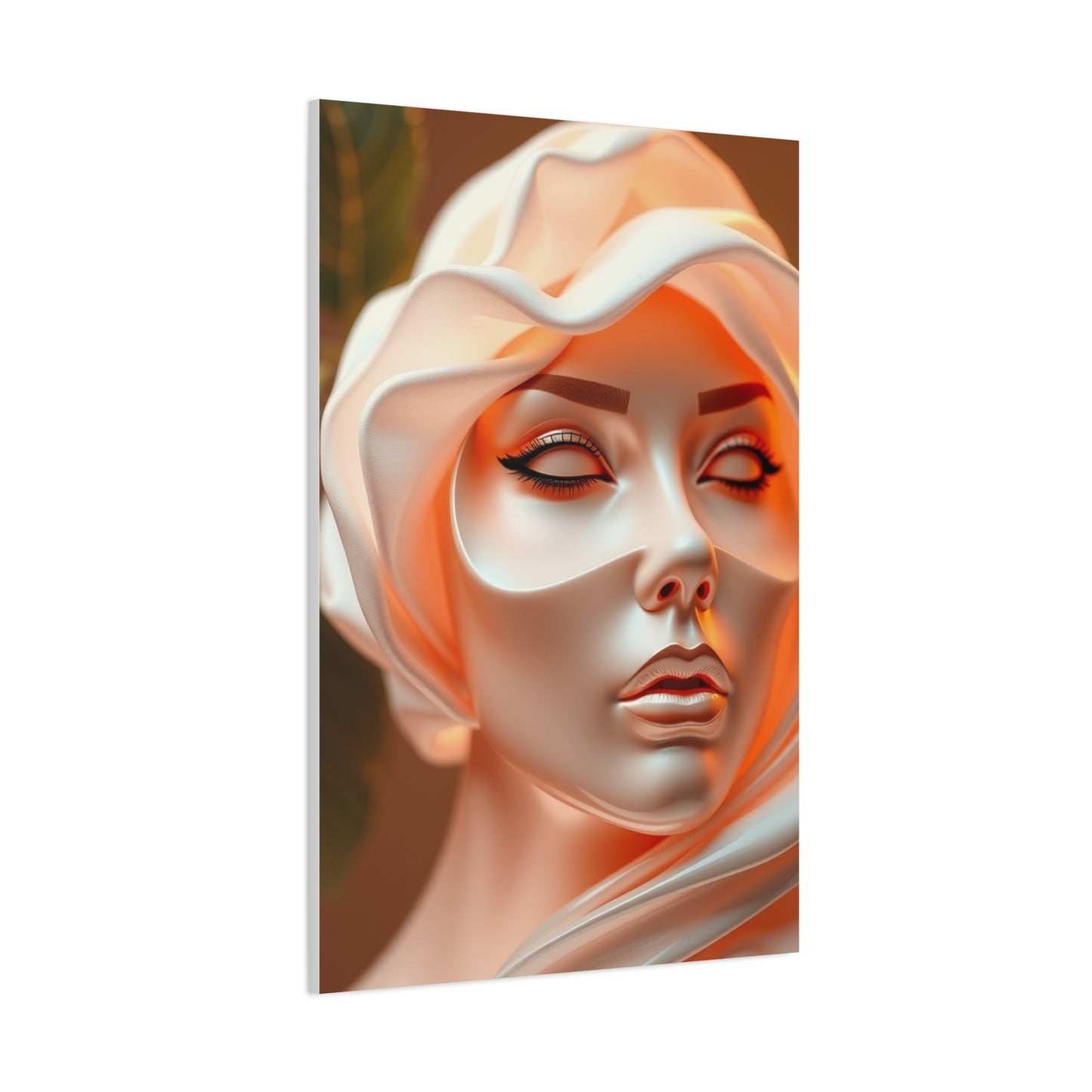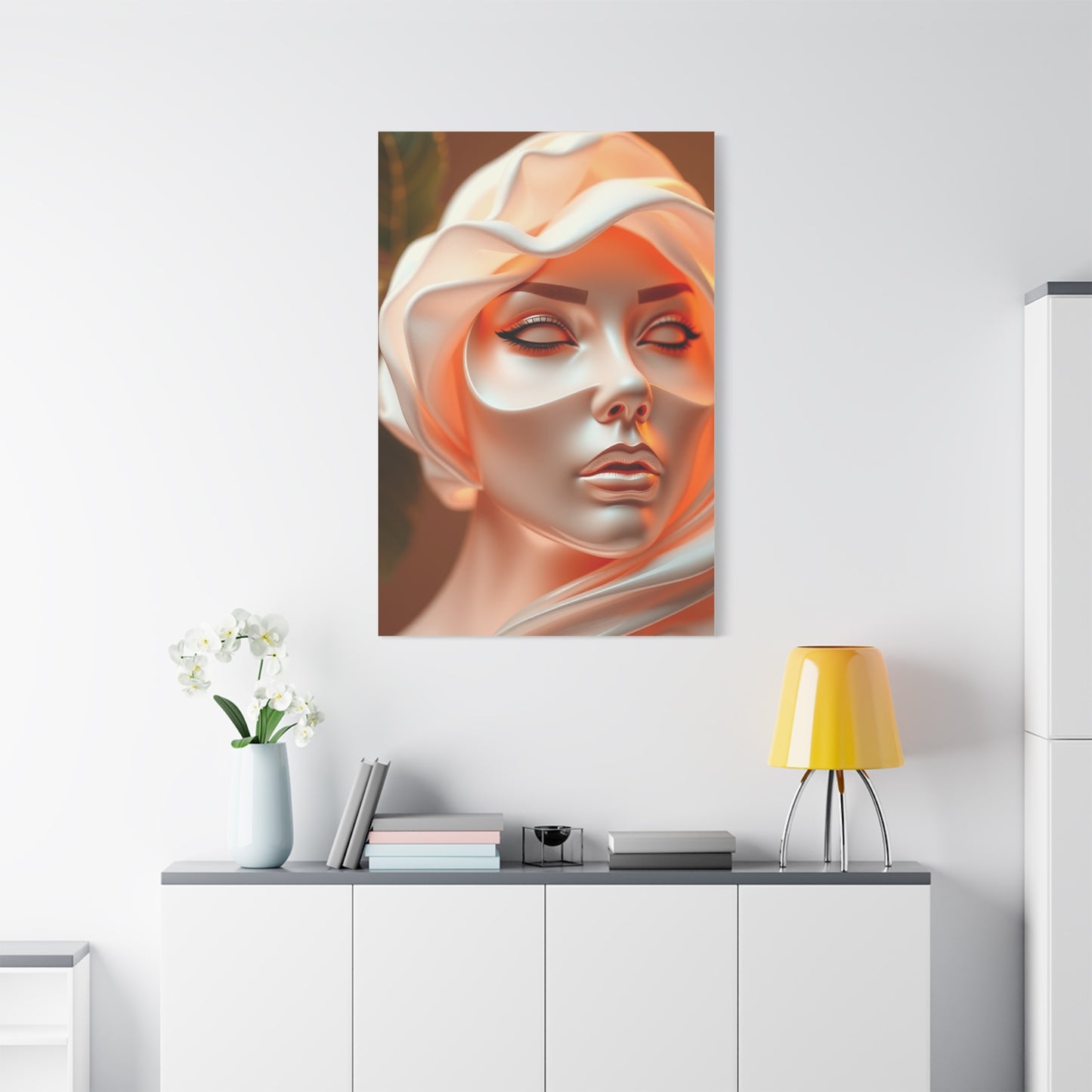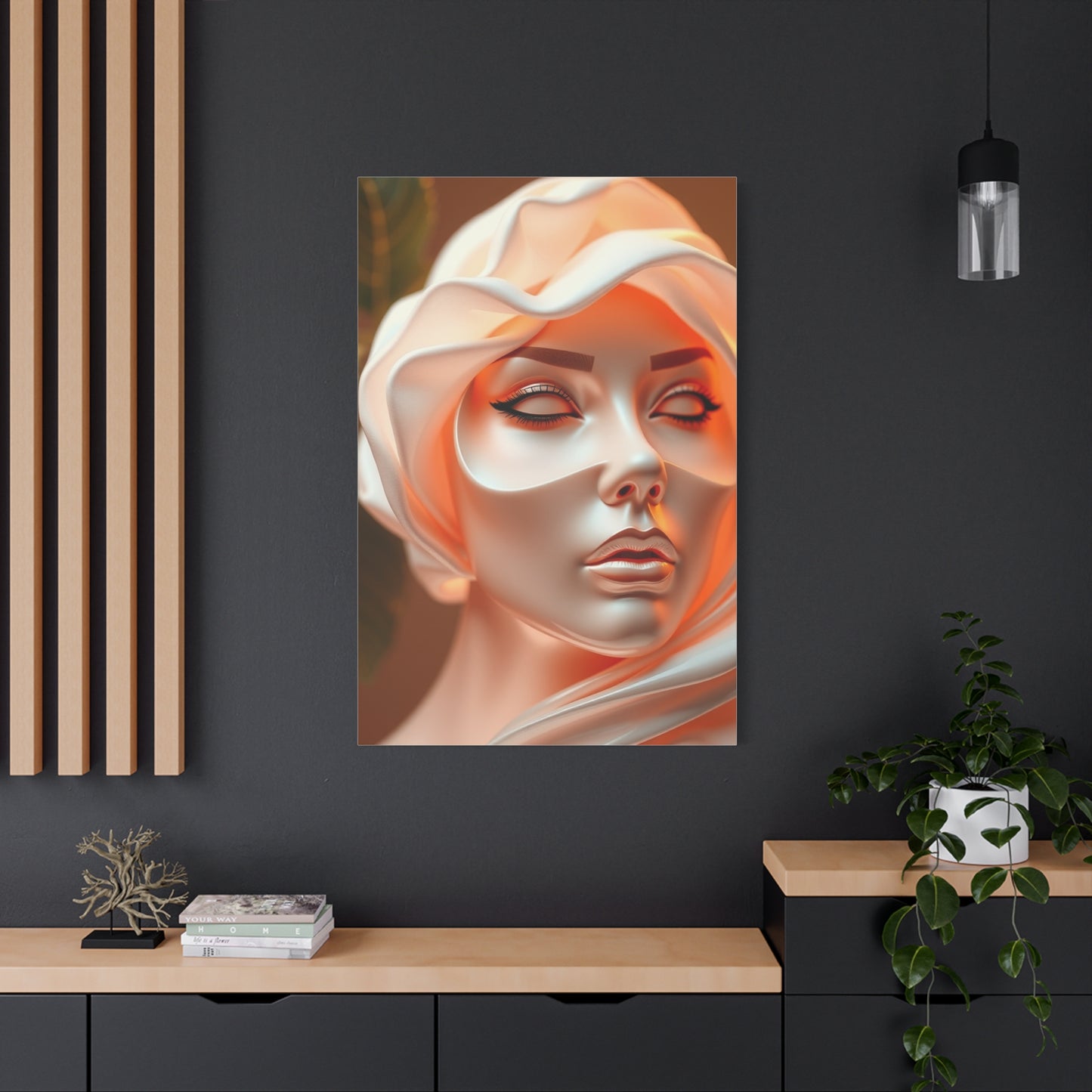Rosé Radiance Masterpiece Art: Celebrating Soft Elegance and a Warm, Inviting Glow
Rose Radiance represents a captivating genre of artistic expression that celebrates the timeless beauty of floral imagery through contemporary visual storytelling. This distinctive artistic approach combines the natural elegance of roses with sophisticated color palettes and innovative compositional techniques to create pieces that resonate with viewers on both aesthetic and emotional levels. The artistic movement has gained significant momentum among collectors, enthusiasts, and those seeking to enhance their environments with meaningful visual elements that transcend conventional botanical representation.
The essence of Rose Radiance lies in its ability to capture the delicate interplay between natural beauty and artistic interpretation. Each piece within this genre represents a careful balance between realism and artistic license, allowing the inherent grace of roses to shine through while incorporating elements of personal expression and creative vision. The artwork draws inspiration from the rich symbolism associated with roses throughout history while reimagining these themes through a contemporary lens that speaks to modern sensibilities and aesthetic preferences.
As an artistic movement, Rose Radiance has emerged as a response to the growing desire for meaningful connections with nature in increasingly urbanized environments. These pieces serve as visual reminders of the natural world's beauty, bringing organic elements into built environments where direct contact with nature may be limited. The popularity of this artistic style reflects a broader cultural shift toward valuing authenticity, emotional resonance, and the integration of natural motifs into daily life.
The versatility of Rose Radiance makes it suitable for diverse settings and purposes, from personal residences to commercial establishments. The artwork adapts seamlessly to various architectural styles and design philosophies, whether complementing traditional aesthetics or enhancing contemporary minimalist environments. This adaptability has contributed to the widespread appeal of Rose Radiance across different demographics, cultural contexts, and geographic locations.
Rose Radiance Artistic Expression: Comprehensive Analysis
The artistic framework of Rose Radiance encompasses a sophisticated understanding of botanical forms, color theory, and compositional dynamics. Artists working within this genre demonstrate exceptional technical proficiency combined with a deep appreciation for the subject matter. The creative process involves extensive observation of natural specimens, studying how light interacts with petals, understanding the structural complexity of rose blooms, and translating these observations into compelling visual narratives.
The development of a Rose Radiance piece begins with conceptual exploration, where artists consider the emotional tone, color palette, and compositional approach that will best serve their artistic vision. This preliminary phase often involves sketching, color studies, and experimental approaches to determine the most effective means of capturing the essence of the subject. Artists may draw inspiration from classical botanical illustrations, impressionist paintings, or contemporary graphic design, synthesizing these influences into a distinctive personal style.
Technical execution in Rose Radiance requires mastery of various artistic techniques depending on the chosen medium. Traditional approaches might involve oil painting, watercolor, or mixed media, each offering unique possibilities for texture, color blending, and visual depth. Digital artists working in this genre leverage advanced software tools to create pieces that rival traditional methods in complexity and visual impact while offering additional flexibility in composition and color manipulation.
The relationship between artist and subject matter in Rose Radiance extends beyond mere representation. Successful pieces convey a sense of intimacy with the natural world, suggesting the artist's personal connection to the beauty and symbolism of roses. This emotional authenticity distinguishes exceptional Rose Radiance from purely decorative floral imagery, creating works that invite contemplation and emotional engagement rather than serving merely as background elements.
The evolution of Rose Radiance as an artistic movement reflects broader trends in contemporary visual culture. The genre incorporates elements of photography, graphic design, and traditional fine arts, creating a hybrid aesthetic that appeals to diverse audiences. This cross-pollination of techniques and approaches has expanded the boundaries of botanical representation, allowing for innovative interpretations that challenge conventional expectations while maintaining respect for the subject's inherent beauty.
Distinctive Characteristics of Rose Radiance Creations
Rose Radiance possesses several distinguishing features that set it apart from generic floral artwork. The most immediately apparent characteristic is the emphasis on luminosity and depth, with artists employing sophisticated techniques to create the illusion of light emanating from within the composition. This quality of inner radiance gives the artwork its name and represents a technical achievement that requires careful consideration of color relationships, tonal values, and compositional structure.
The level of detail in Rose Radiance varies according to artistic intent and style preferences. Some pieces feature hyper-realistic rendering that captures every subtle variation in petal texture, vein patterns, and color gradation. These works demonstrate extraordinary technical skill and patience, often requiring hundreds of hours to complete. The meticulous attention to detail creates an almost photographic quality that invites close examination and rewards sustained viewing with the discovery of subtle nuances.
Alternative approaches within the Rose Radiance genre embrace more interpretive or abstract representations. These pieces distill the essence of roses into simplified forms, focusing on color relationships, gestural marks, or graphic elements rather than botanical accuracy. The abstracted approach allows for greater expressive freedom and can communicate emotional qualities or atmospheric effects that might be constrained by strictly realistic representation.
Color saturation represents another key feature of Rose Radiance. Artists working in this style often employ rich, vibrant hues that amplify the natural beauty of roses while creating visually striking compositions. The color intensity is carefully calibrated to maintain visual harmony, avoiding garishness while achieving maximum impact. The sophisticated use of color demonstrates advanced understanding of color theory and the psychological effects of different hues on viewer perception and emotional response.
Compositional dynamism distinguishes exceptional Rose Radiance from static floral arrangements. Artists employ various strategies to create visual movement and interest within the frame, including diagonal lines, overlapping forms, varied scale relationships, and strategic use of negative territory. These compositional choices guide the viewer's eye through the piece, creating a visual journey that maintains engagement and reveals new details with repeated viewing.
The integration of background elements in Rose Radiance varies significantly across different pieces and artistic approaches. Some works feature roses against neutral or abstract backgrounds that allow the flowers to command complete attention. Others incorporate contextual elements such as foliage, atmospheric effects, or environmental suggestions that situate the roses within a broader narrative or mood. The relationship between figure and ground in these compositions contributes significantly to the overall aesthetic impact and emotional resonance.
Color Composition in Rose Radiance Artwork
The color palette employed in Rose Radiance serves as the foundation for the artwork's emotional impact and visual appeal. Artists working within this genre demonstrate sophisticated understanding of color theory, utilizing hue, saturation, and value to create compositions that resonate with viewers on both conscious and subconscious levels. The selection of colors extends beyond simple representation of natural rose varieties to encompass broader considerations of mood, atmosphere, and symbolic meaning.
Traditional rose colors feature prominently in Rose Radiance, including various shades of red, pink, white, yellow, and orange. These classic hues connect the artwork to centuries of cultural associations and symbolic meanings, tapping into deep-seated emotional responses and cultural memories. Red roses, for instance, carry connotations of passion, love, and vitality, while pink varieties suggest gentleness, grace, and appreciation. White roses evoke purity, innocence, and new beginnings, offering a sense of serenity and contemplation.
Beyond conventional rose colors, Rose Radiance often incorporates unexpected hues that expand the emotional and aesthetic range of the artwork. Purple and lavender tones introduce elements of mystery, spirituality, and imagination. Blue roses, though not naturally occurring, appear in artistic interpretations to suggest the impossible, the dreamlike, or the transcendent. These unconventional color choices allow artists to explore themes beyond the traditional symbolic associations of roses, creating unique visual experiences.
The treatment of color gradation in Rose Radiance demonstrates exceptional technical sophistication. Artists employ subtle transitions between hues to create depth, dimension, and the illusion of natural light interacting with petal surfaces. These gradations might move from deep, saturated cores to lighter, more luminous edges, mimicking the way light penetrates translucent petals. The careful orchestration of these color shifts creates the characteristic radiance that defines the genre.
Complementary and analogous color schemes play significant roles in Rose Radiance compositions. Artists might juxtapose warm and cool tones to create visual tension and interest, or employ harmonious color relationships to evoke tranquility and unity. The strategic use of contrast draws attention to focal points while maintaining overall compositional balance. Understanding these color relationships allows artists to manipulate viewer perception and guide emotional responses to the artwork.
Background colors in Rose Radiance significantly influence the overall mood and visual impact of the piece. Deep, saturated backgrounds create dramatic contrast that makes floral elements appear to glow with inner light. Neutral backgrounds offer versatility and allow the flowers to integrate seamlessly with various environmental contexts. Atmospheric or gradient backgrounds suggest depth and environmental context, creating a more immersive visual experience. The relationship between foreground and background colors represents a critical compositional decision that shapes the viewer's experience.
The psychological effects of color in Rose Radiance extend beyond aesthetic considerations to influence mood, emotion, and even physiological responses. Warm colors such as reds, oranges, and yellows tend to energize and stimulate, creating feelings of warmth, excitement, or joy. Cool colors including blues, greens, and purples promote relaxation, contemplation, and tranquility. Artists working in Rose Radiance leverage these psychological associations to create specific emotional atmospheres that align with their artistic intentions.
Symbolic Significance in Rose Radiance Compositions
The symbolic dimension of Rose Radiance adds layers of meaning that extend beyond pure aesthetic appreciation. Roses have carried symbolic significance across cultures and throughout history, representing concepts ranging from love and beauty to secrecy and political allegiance. Rose Radiance taps into this rich symbolic tradition while allowing for contemporary reinterpretation and personal meaning-making.
The universal association between roses and love forms the foundation of much Rose Radiance symbolism. These pieces often serve as visual expressions of affection, whether romantic love, familial bonds, or self-love and acceptance. The presence of Rose Radiance in personal environments can serve as a constant reminder of cherished relationships or personal commitments to emotional openness and vulnerability. This symbolic function adds emotional depth to the artwork beyond its visual appeal.
Roses also symbolize beauty, perfection, and the ephemeral nature of existence. The careful preservation of rose imagery in Rose Radiance represents an attempt to capture and immortalize transient beauty. Unlike living flowers that bloom and fade, artistic representations offer permanence and stability, allowing viewers to enjoy the beauty of roses indefinitely. This symbolic preservation speaks to human desires to hold onto beautiful moments and create lasting records of fleeting experiences.
The concept of growth and unfolding appears frequently in Rose Radiance symbolism. The stages of rose development from bud to full bloom mirror human experiences of maturation, self-discovery, and personal transformation. Pieces featuring roses at various stages of development might symbolize journey, process, and the beauty inherent in all phases of growth. This symbolic reading adds contemplative depth to the artwork, inviting viewers to reflect on their own developmental journeys.
Cultural and spiritual symbolism enriches the interpretive possibilities of Rose Radiance. In various mystical traditions, roses represent spiritual unfolding, divine love, or the human heart as the seat of emotion and consciousness. The mandala-like geometry of rose blooms has been interpreted as symbols of cosmic order, unity, and perfection. Artists may consciously incorporate these symbolic dimensions into their work, creating pieces that function as meditation aids or spiritual focal points.
The thorns traditionally associated with roses introduce symbolic complexity and duality into Rose Radiance. While most pieces focus on the blooms themselves, the implicit presence of thorns reminds viewers that beauty and danger, pleasure and pain, often coexist. This symbolic dimension adds philosophical depth, suggesting that appreciation of beauty requires acceptance of vulnerability and potential hurt. The rose becomes a symbol of the complex, multifaceted nature of human experience.
Contemporary interpretations of rose symbolism in Rose Radiance reflect evolving cultural values and individual meaning-making. Artists may subvert traditional associations, using roses to explore themes of strength, resilience, or empowerment rather than conventional romantic connotations. The flexibility of rose symbolism allows for diverse interpretations that resonate with individual viewers' experiences, values, and emotional needs, making Rose Radiance personally meaningful across diverse audiences.
Incorporating Rose Radiance into Residential Settings
The integration of Rose Radiance into home environments offers numerous aesthetic and emotional benefits. These pieces serve as focal points that draw the eye, anchor design schemes, and introduce natural beauty into built environments. The process of selecting and displaying Rose Radiance involves consideration of scale, color relationships, lighting conditions, and the existing aesthetic character of the environment.
The first step in incorporating Rose Radiance involves assessing the existing design elements and identifying opportunities for enhancement or focal point creation. Consideration of wall colors, furniture styles, textile patterns, and architectural features helps determine which Rose Radiance pieces will harmonize most effectively with the environment. The goal is to create cohesive visual relationships where the artwork complements rather than conflicts with surrounding elements.
Scale represents a critical consideration when selecting Rose Radiance for residential settings. Large-scale pieces create dramatic focal points and can anchor entire rooms, while smaller works offer flexibility for arrangement in groupings or integration into gallery wall compositions. The relationship between artwork size and wall dimensions affects the visual impact and balance of the installation. Properly scaled artwork creates a sense of intentionality and professional finish.
Color coordination between Rose Radiance and surrounding elements enhances visual harmony and cohesion. Artwork might echo accent colors found in textiles, repeat dominant hues from major furniture pieces, or introduce complementary colors that add visual interest and balance. The color relationships between artwork and environment significantly influence the overall aesthetic success of the integration, creating either harmonious unity or dynamic contrast depending on design intent.
Lighting considerations profoundly impact the presentation and appreciation of Rose Radiance. Natural light brings out color vibrancy and reveals subtle details in the artwork, though direct sunlight should be avoided to prevent fading and damage. Artificial lighting options including picture lights, track lighting, or strategically positioned lamps can highlight artwork and create dramatic visual effects, particularly in the evening hours. The quality, direction, and intensity of light significantly influence how Rose Radiance is perceived and experienced.
The placement height of Rose Radiance affects both visibility and aesthetic impact. General guidelines suggest centering artwork at average eye level, typically around sixty inches from the floor to the center of the piece. However, specific contexts might warrant adjustments to this standard, such as hanging artwork higher in rooms with tall ceilings or lower in settings where viewers will be seated. The goal is to facilitate comfortable viewing while maintaining proper visual relationships with surrounding elements.
Creating visual relationships between multiple Rose Radiance pieces requires attention to spacing, alignment, and compositional balance. Gallery wall arrangements might combine various sizes and orientations to create dynamic visual interest, while symmetrical pairings offer classical balance and formality. The spacing between pieces affects whether they read as individual works or as components of a unified composition. Thoughtful arrangement creates sophisticated visual narratives that enhance the viewing experience.
Rose Radiance in Sleeping Quarters
The bedroom represents an ideal setting for Rose Radiance due to the emotional qualities and aesthetic characteristics of this artwork style. The calming influence of floral imagery combined with sophisticated color palettes creates environments conducive to relaxation, rest, and emotional rejuvenation. The selection of Rose Radiance for sleeping quarters involves consideration of color psychology, scale, subject matter, and personal aesthetic preferences.
Soft, muted color palettes in Rose Radiance work particularly well in bedroom settings where tranquility and restfulness are priorities. Pieces featuring pastel pinks, lavenders, creams, or soft whites create soothing visual environments that promote relaxation and peaceful sleep. These gentle hues avoid visual overstimulation while providing aesthetic interest and beauty. The psychological effects of these colors support the bedroom's primary functions of rest and restoration.
The positioning of Rose Radiance in bedrooms requires strategic consideration of sightlines and functional needs. Above the bed represents the traditional placement for bedroom artwork, creating a visual focal point visible from the entrance and anchoring the bed as the room's primary feature. This placement works well with horizontal orientations or diptych arrangements that emphasize the width of the bed. Alternative placements might include positions opposite the bed, visible upon waking, or on perpendicular walls that create visual interest throughout the room.
The scale of Rose Radiance in bedroom settings often tends toward substantial sizes that create significant visual impact without overwhelming the intimate character of the room. A single large piece above the bed can serve as the room's primary artistic statement, eliminating the need for additional artwork on that wall. Medium-sized pieces offer flexibility for pairing or grouping, while smaller works might be incorporated into bedside vignettes or gallery wall arrangements.
The subject matter and mood of Rose Radiance selected for bedrooms should align with the emotional atmosphere desired for the setting. Romantic, gentle compositions featuring soft-focus roses or dreamy interpretations create environments conducive to relaxation and intimacy. More vibrant or energetic Rose Radiance pieces might be chosen for bedrooms where the occupant wishes to feel energized upon waking, though care should be taken to avoid overstimulation that might interfere with sleep preparation.
Coordination between Rose Radiance and bedroom textiles creates cohesive design schemes that feel intentional and polished. The artwork might echo colors from bedding, curtains, or upholstery, creating visual threads that unify the various elements of the room. Alternatively, the artwork might introduce accent colors that provide contrast and visual interest while maintaining overall harmony. The relationship between artwork and textiles significantly influences the room's aesthetic character and emotional tone.
The intimate scale and personal nature of bedroom environments make them ideal settings for Rose Radiance pieces with special emotional significance. Artwork that carries symbolic meaning, represents significant life events, or connects to cherished memories adds layers of personal meaning to the environment. The bedroom's private character allows for deeply personal artistic choices that might not be appropriate for more public areas of the home, creating environments that reflect authentic self-expression and emotional truth.
Enhancing Common Areas with Rose Radiance
Common gathering areas benefit significantly from the addition of Rose Radiance, which introduces natural beauty, sophisticated color, and emotional warmth into these social environments. The selection and placement of Rose Radiance in these communal areas involves balancing aesthetic impact with functional considerations, creating environments that welcome guests while reflecting the inhabitants' personal style and values.
The living room typically serves as the primary showcase for significant artwork, making it an ideal location for impressive Rose Radiance pieces. The scale of these communal areas often accommodates large-format works that create dramatic visual impact and serve as conversation starters. The positioning of Rose Radiance above sofas, fireplaces, or console tables creates natural focal points that anchor furniture arrangements and guide traffic flow through the room.
Color relationships between Rose Radiance and living room design elements require careful consideration to create cohesive, visually pleasing environments. The artwork might pick up accent colors from throw pillows, area rugs, or decorative accessories, creating visual connections that unify the various elements of the room. Alternatively, Rose Radiance might introduce contrasting colors that add visual excitement and prevent the design scheme from becoming monotonous. The balance between harmony and contrast influences the overall aesthetic character and visual interest of the room.
The conversational nature of living rooms makes them ideal settings for Rose Radiance pieces that invite discussion and interpretation. Abstract or conceptual works featuring roses might spark interesting conversations among guests, while hyperrealistic pieces might prompt admiration of technical skill and artistic achievement. The artwork becomes part of the social fabric of the room, contributing to the environmental character and facilitating interpersonal connection.
Lighting in living areas significantly affects the presentation and appreciation of Rose Radiance. These communal rooms often feature multiple lighting sources including overhead fixtures, table lamps, and floor lamps, creating complex lighting conditions that change throughout the day and evening. Strategic use of dedicated picture lighting ensures that Rose Radiance remains visible and visually striking regardless of ambient lighting conditions, maintaining the artwork's role as a focal point and design anchor.
The architectural features of living rooms including ceiling height, wall proportions, and built-in elements influence the selection and placement of Rose Radiance. High ceilings might accommodate vertically oriented pieces or arrangements that draw the eye upward, enhancing the sense of spaciousness and architectural grandeur. Horizontal pieces work well above low-profile furniture or in rooms with moderate ceiling heights, emphasizing width and creating visual stability.
The integration of Rose Radiance into living rooms alongside other artwork requires attention to stylistic coherence and compositional balance. While mixing different artistic styles can create interesting eclecticism, some level of visual connection between pieces helps create cohesive environments. Rose Radiance might anchor a gallery wall featuring complementary pieces, or stand alone as the primary artistic statement with supporting decorative elements arranged around it.
Presentation Methods for Rose Radiance Reproductions
The framing of Rose Radiance prints significantly impacts their visual presentation, longevity, and integration into various environments. Professional framing protects the artwork from environmental damage while enhancing its aesthetic appeal and creating finished presentations suitable for display. The selection of framing components involves consideration of style, materials, colors, and proportions that complement the artwork while reflecting personal taste and environmental context.
Frame style represents one of the most impactful decisions in artwork presentation. Traditional ornate frames featuring carved details, gold or silver leaf, and classical profiles suit Rose Radiance pieces with romantic or vintage aesthetics. These elaborate frames add gravitas and formality, making them appropriate for traditional decors or when the goal is to emphasize the artwork's importance. The ornamental character of such frames complements the natural beauty of roses while adding an additional layer of visual richness.
Modern frame styles featuring clean lines, minimal ornamentation, and contemporary materials suit Rose Radiance pieces with sleek, graphic, or minimalist qualities. Simple metal frames in finishes such as black, white, or natural aluminum create crisp, refined presentations that emphasize the artwork itself rather than the framing. These contemporary frames integrate seamlessly with modern design schemes and allow the colors and composition of the Rose Radiance to command complete attention.
Natural wood frames offer versatility and warmth appropriate for diverse Rose Radiance styles and environmental contexts. Light woods such as maple, oak, or ash create casual, approachable presentations with organic appeal, while darker woods including walnut, mahogany, or ebony add richness and sophistication. The grain patterns and natural color variations in wood frames introduce textural interest that complements the organic subject matter of Rose Radiance while providing visual warmth.
The width and profile of frames significantly affect the visual presence and formality of Rose Radiance presentations. Wide frames create substantial borders that command attention and lend importance to the artwork, while narrow frames offer more subtle, refined presentations that emphasize the image itself. The profile depth affects whether the frame reads as delicate and contemporary or substantial and traditional. These dimensional considerations influence both the aesthetic character and the physical presence of the framed piece.
Matting decisions profoundly impact the presentation and visual breathing room around Rose Radiance prints. White and off-white mats offer classic, neutral presentations that suit diverse styles and color palettes, creating clean separation between artwork and frame. Colored mats might echo hues from within the artwork, creating cohesive color relationships and drawing attention to specific elements within the composition. The width of matting affects the visual proportions and formality of the presentation, with wider mats creating more substantial, formal presentations.
Glazing options protect Rose Radiance prints from environmental damage while affecting the viewing experience. Standard glass offers basic protection at economical prices but can create distracting reflections that interfere with artwork visibility. Non-reflective or museum glass significantly reduces reflections, allowing clear viewing from various angles and lighting conditions while providing superior protection from ultraviolet radiation that causes fading. Acrylic glazing offers lightweight alternatives to glass, particularly important for large-format pieces where glass weight becomes a significant consideration.
Preservation and Maintenance of Rose Radiance Artwork
Proper care and maintenance extend the lifespan and preserve the beauty of Rose Radiance pieces, protecting the investment and ensuring continued enjoyment for years or decades. Understanding the threats to artwork longevity and implementing appropriate protective measures helps maintain optimal condition and prevents deterioration that could diminish aesthetic appeal or monetary value.
Light exposure represents one of the primary threats to Rose Radiance longevity, particularly for pieces created with light-sensitive materials such as prints, watercolors, or certain pigments. Ultraviolet radiation causes fading and color shifts that gradually degrade the artwork's appearance. Positioning Rose Radiance away from direct sunlight, particularly intense afternoon sun, provides basic protection. Installing UV-filtering window films or using frames with UV-protective glazing offers additional safeguards against light-induced damage.
Temperature and humidity fluctuations can cause dimensional changes in artwork materials, leading to warping, buckling, or other structural problems. Maintaining stable environmental conditions helps preserve artwork integrity. Ideal conditions involve moderate temperatures between sixty-five and seventy-five degrees Fahrenheit and relative humidity between forty and fifty-five percent. Avoiding placement near heating vents, air conditioning outlets, radiators, or fireplaces helps maintain stable environmental conditions around Rose Radiance pieces.
Dust accumulation affects the appearance of Rose Radiance and can contribute to long-term deterioration if allowed to build up over extended periods. Regular gentle dusting using soft, lint-free cloths or specialized dusting tools removes surface accumulation without causing damage. For framed pieces under glass or acrylic, cleaning the glazing with appropriate cleaners maintains clarity and viewing quality. Care should be taken to avoid moisture contact with artwork itself, as many materials are susceptible to water damage.
The hanging hardware and installation methods used for Rose Radiance affect both security and preservation. Appropriate hardware rated for the weight of framed pieces prevents accidents and damage from falling artwork. Wall anchors suitable for the wall type ensure secure attachment capable of supporting the artwork's weight over time. Regular inspection of hanging hardware and wall mounting points helps identify potential problems before they result in damage or accidents.
Canvas Rose Radiance pieces require specific care considerations due to the nature of the material. Canvas can be damaged by punctures, tears, or contact with sharp objects, necessitating careful handling and placement away from high-traffic areas where accidental contact might occur. The tensioned nature of stretched canvas means that impacts can create dents or distortions in the painting surface. Moderate humidity helps maintain optimal canvas tension, while excessive dryness can cause brittleness and excessive humidity can promote mold growth.
Professional conservation services become necessary when Rose Radiance pieces show signs of significant deterioration, damage, or when specialized cleaning is required. Qualified conservators possess the expertise and materials necessary to address problems without causing additional harm. Attempting amateur restoration of valuable or damaged artwork can result in irreversible damage that significantly reduces value and aesthetic quality. Consultation with conservation professionals provides appropriate guidance for addressing specific concerns.
Storage of Rose Radiance not currently on display requires careful attention to protect pieces from environmental damage during periods of storage. Artwork should be stored in climate-controlled environments away from temperature and humidity extremes. Acid-free materials should be used for wrapping and cushioning to prevent chemical damage. Vertical storage prevents the weight of stacked pieces from causing indentations or surface damage. Proper storage practices ensure that artwork emerges from storage in the same condition it entered, ready for display when circumstances allow.
Contemporary Aesthetic in Rose Radiance Interpretations
Modern approaches to Rose Radiance reflect current design sensibilities and artistic trends, creating pieces that resonate with contemporary audiences while maintaining connection to the timeless beauty of roses. These interpretations often emphasize clean lines, bold color choices, graphic elements, and innovative compositional strategies that distinguish them from traditional botanical artwork. The modern Rose Radiance movement demonstrates the continued relevance and adaptability of floral imagery in contemporary visual culture.
Geometric elements appear frequently in modern Rose Radiance, with artists incorporating angular forms, precise edges, and structured compositions that contrast with the organic nature of roses. This juxtaposition between natural and geometric creates visual tension and interest, appealing to audiences who appreciate both natural beauty and designed precision. The geometric framework might emerge through composition, stylistic treatment of the roses themselves, or integration of abstract elements that complement the floral imagery.
Color blocking represents another hallmark of modern Rose Radiance, with artists employing areas of solid, unmodulated color to create graphic impact and contemporary aesthetic appeal. This approach simplifies the visual information while maintaining strong aesthetic presence, creating pieces that work particularly well in modern environments with clean lines and minimal ornamentation. The high-contrast relationships between color blocks create dynamic visual interest and emphasize the designed quality of the artwork.
Minimalist interpretations of Rose Radiance reduce floral imagery to essential forms and simplified color palettes, creating contemplative pieces that emphasize negative space and visual restraint. These works often feature single blooms or small groupings rather than abundant floral arrangements, focusing attention on the individual beauty and form of roses. The minimalist approach creates serene, meditative pieces that suit contemporary sensibilities favoring clarity and simplicity over abundance and complexity.
Digital techniques enable modern Rose Radiance interpretations that would be impossible or impractical with traditional media. Artists leverage software capabilities to create perfectly symmetrical compositions, manipulate colors beyond natural possibilities, combine photographic and illustrated elements, or generate abstract patterns derived from rose imagery. The digital toolkit expands creative possibilities while maintaining the emotional resonance and visual appeal that characterize the Rose Radiance genre.
Textural contrast appears in modern Rose Radiance through the juxtaposition of smooth, flat areas with richly textured passages that add tactile interest and visual depth. This approach might involve combining matte and glossy surfaces, incorporating dimensional elements, or using techniques that create the appearance of texture even in flat media. The textural variety adds sensory richness and creates visual interest that rewards close examination while maintaining strong impact from distance.
Contemporary color palettes in modern Rose Radiance often embrace unconventional hues that expand beyond traditional rose colors. Neon accents, metallic finishes, or unexpected color combinations create fresh, current aesthetics that appeal to younger audiences and contemporary design sensibilities. These bold color choices demonstrate the flexibility of rose imagery as a foundation for artistic innovation while maintaining the emotional and symbolic resonances that make roses compelling subjects.
Rose Radiance in Streamlined Environments
The integration of Rose Radiance into minimalist environments requires thoughtful selection and placement to maintain the clarity and intentionality that characterize this design philosophy. Rather than creating visual clutter or competing for attention, appropriately chosen Rose Radiance enhances minimalist settings by introducing controlled doses of natural beauty, color, and emotional warmth. The key lies in selecting pieces whose aesthetic character aligns with minimalist principles of simplicity, restraint, and purposeful presence.
Single-subject Rose Radiance pieces work particularly well in minimalist contexts, offering focused visual interest without the complexity or abundance that might overwhelm spare environments. A solitary bloom rendered with clarity and precision creates a powerful focal point that demonstrates the minimalist principle of achieving maximum impact with minimum elements. The simplicity of single-subject compositions allows roses to command complete attention while maintaining the visual clarity that defines successful minimalist design.
Neutral or monochromatic Rose Radiance pieces integrate seamlessly into minimalist environments characterized by restrained color palettes. Black and white interpretations offer sophisticated alternatives to color pieces, emphasizing form, light, and shadow while maintaining visual restraint. Sepia or grayscale pieces introduce subtle warmth without the visual complexity of full-color artwork, creating gentle focal points that enhance rather than dominate minimalist settings.
The placement of Rose Radiance in minimalist environments follows the principle of intentional isolation, where artwork occupies dedicated wall territory with substantial breathing room. Rather than clustering multiple pieces or surrounding artwork with numerous decorative elements, the minimalist approach allows single pieces to stand alone, commanding attention through their isolation and the careful consideration evident in their placement. This generous use of negative territory emphasizes the importance of the artwork while maintaining visual calm.
Scale considerations in minimalist Rose Radiance installations often favor substantial pieces that create significant visual presence without requiring multiple elements. A single large-format work might serve as the only artistic element in a room, functioning as both focal point and design statement. This approach aligns with minimalist preferences for quality over quantity, investing in fewer but more impactful pieces rather than accumulating numerous smaller works.
The framing of Rose Radiance for minimalist settings typically employs simple, refined frames that avoid ornamental distraction. Thin metal frames in black, white, or natural finishes create crisp boundaries without drawing attention from the artwork. Alternatively, float mounting or frameless presentations emphasize the artwork itself while maintaining the clean, uncluttered aesthetic that characterizes successful minimalist design. The framing choice should enhance rather than compete with the artwork's visual impact.
The emotional warmth that Rose Radiance introduces into minimalist environments represents a valuable counterbalance to the potential coldness of extremely spare design. While minimalism excels at creating visual calm and spatial clarity, it can sometimes feel austere or unwelcoming without elements that provide emotional connection. Thoughtfully selected Rose Radiance brings human warmth, natural beauty, and emotional resonance into minimalist environments, creating settings that feel both clear and nurturing.
Gifting Rose Radiance Reproductions
Rose Radiance reproductions make exceptional gifts for various occasions, combining aesthetic beauty with emotional significance and symbolic meaning. The thoughtful selection of Rose Radiance as a gift demonstrates consideration of the recipient's tastes, values, and living environment while offering lasting value that extends far beyond the momentary pleasure of consumable gifts. Understanding the occasions, recipient preferences, and presentation strategies helps maximize the impact and appreciation of Rose Radiance gifts.
Anniversary celebrations represent ideal occasions for gifting Rose Radiance, particularly given roses' traditional association with love and romantic commitment. The specific color of roses in the artwork might reflect traditional anniversary color symbolism or personal preferences of the couple. Commissioning or selecting Rose Radiance that incorporates elements meaningful to the couple's relationship creates personalized gifts that carry deep emotional significance beyond mere aesthetic appeal.
Housewarming gifts of Rose Radiance help new homeowners personalize their environments and create welcoming atmospheres. The selection of pieces that complement the recipients' known style preferences and home décor demonstrates thoughtfulness and consideration. Practical considerations including size, color palette, and subject matter ensure that the gift can be immediately integrated into the new home, serving as both decoration and reminder of the giver's affection and support.
Wedding gifts of Rose Radiance offer enduring beauty that appreciates in meaning over time as couples build their lives together. Sets or diptychs create elegant presentations suitable for prominent placement in newlywed homes. The timeless nature of Rose Radiance ensures that these gifts remain aesthetically relevant and emotionally meaningful throughout the couple's life together, potentially becoming family heirlooms passed to future generations.
Birthday gifts of Rose Radiance selected according to birth month flower symbolism or the recipient's favorite colors demonstrate personal knowledge and thoughtful consideration. For those with May birthdays, for whom the rose serves as the birth flower, Rose Radiance carries additional symbolic significance. The gift acknowledges the recipient's individuality while providing lasting enjoyment and aesthetic enhancement of their personal environment.
Professional achievement recognition through Rose Radiance gifts offers sophisticated alternatives to traditional recognition items. Artwork suitable for office display demonstrates respect for the recipient's accomplishment while providing lasting reminder of the milestone. The selection of pieces with professional aesthetic character ensures appropriateness for workplace display while maintaining the beauty and emotional resonance that make Rose Radiance meaningful.
Sympathy and condolence situations sometimes call for gifts that provide comfort and beauty during difficult times. Rose Radiance featuring white or soft pink roses offers gentle beauty and hopeful symbolism appropriate for expressions of sympathy. The enduring nature of artwork provides continuing comfort long after flowers have faded, serving as reminder of support and care during challenging periods.
The presentation of Rose Radiance gifts enhances the giving experience and demonstrates additional thoughtfulness. Quality wrapping materials, protective packaging, and personal notes explaining the symbolism or reasons for selection add layers of meaning to the gift. For particularly significant occasions, professional framing before gifting ensures that the artwork is ready for immediate display, eliminating additional expense and effort for the recipient while demonstrating complete thoughtfulness in the gift-giving process.
Professional Settings Enhanced by Rose Radiance
Office environments benefit significantly from the incorporation of Rose Radiance, which introduces natural beauty, color, and emotional warmth into settings often characterized by functional efficiency rather than aesthetic consideration. The strategic placement of Rose Radiance in professional contexts can enhance employee wellbeing, create more welcoming environments for clients and visitors, and reflect organizational values and culture. The selection of appropriate pieces requires balancing professional appropriateness with artistic impact.
Private office settings offer opportunities for personal expression through Rose Radiance that reflects individual taste while maintaining professional decorum. Executive offices might feature substantial Rose Radiance pieces that create impressive focal points demonstrating cultural sophistication and aesthetic sensibility. The artwork contributes to the office's authority and polish while humanizing the environment and suggesting the occupant's multidimensional character beyond purely professional capabilities.
Conclusion:
In conclusion, Rosé Radiance masterpiece art beautifully captures the essence of soft elegance and a warm, inviting glow, making it an ideal addition to any space seeking to blend subtlety with sophistication. This style of art embraces gentle hues, delicate forms, and luminous tones that evoke feelings of comfort, serenity, and understated luxury. Whether displayed in a living room, bedroom, or entryway, Rosé Radiance pieces have the power to transform a room’s ambiance by introducing warmth and a soothing sense of harmony.
One of the defining characteristics of Rosé Radiance art is its ability to balance light and color in a way that feels both uplifting and calming. The soft blush and peach tones, reminiscent of a gentle sunset or a fine glass of rosé wine, infuse spaces with a natural glow that complements a wide range of interior styles—from minimalist and modern to rustic and romantic. This versatility makes Rosé Radiance a popular choice for those who want art that enhances rather than overwhelms, creating a tranquil backdrop for daily life.
Beyond its aesthetic appeal, Rosé Radiance art also carries an emotional resonance. The warmth it exudes invites connection and relaxation, encouraging viewers to slow down and appreciate moments of quiet beauty. It celebrates the power of subtlety—proving that elegance does not have to be loud or ostentatious but can instead reside in the gentle interplay of light, shadow, and soft color gradients. This makes it particularly suited for creating welcoming environments in homes, offices, or hospitality settings where comfort and style must coexist.
Moreover, Rosé Radiance masterpiece art often incorporates textures and materials that enhance its luminous quality. From soft brushstrokes and layered glazes to mixed media elements that catch and reflect light, these works invite a tactile as well as visual experience. The interplay of texture and color deepens the viewer’s engagement, adding richness and dimension to the art.
Ultimately, investing in Rosé Radiance art is an investment in atmosphere and emotional well-being. These artworks are more than decorative objects—they are mood-setters, inspiring feelings of peace, warmth, and elegance every time you encounter them. By choosing pieces that reflect your personal taste and complement your space, you create an environment where beauty and comfort coexist seamlessly.
In embracing the soft elegance and warm glow of Rosé Radiance masterpiece art, you welcome a timeless expression of grace and tranquility into your home, enriching your everyday living with a radiant, inviting presence.

















